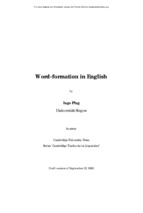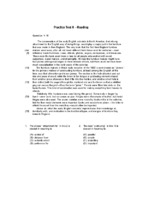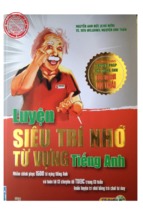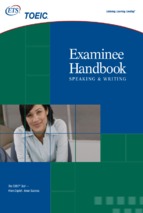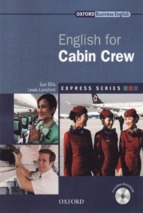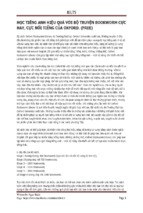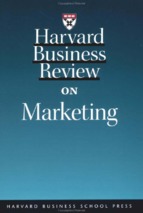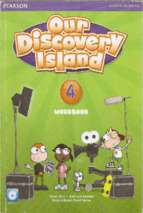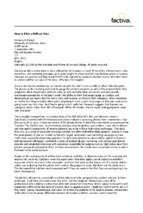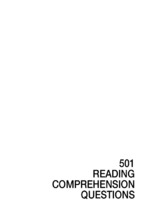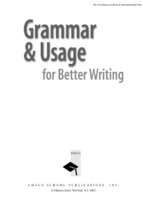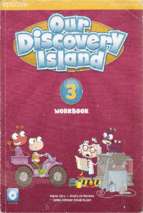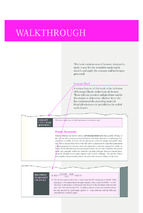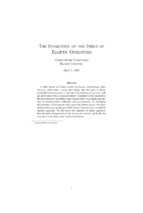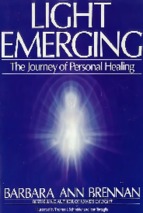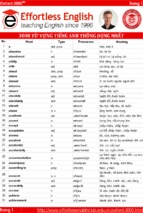CHECK YOUR ENGLISH VOCABULARY FOR
BUSINESS
AND
ADMINISTRATION
4th edition
Rawdon Wyatt
A & C Black 폷 London
www.acblack.com
First published as Check Your Vocabulary for Business in 1996
by Peter Collin Publishing
Second edition published 1999
Third edition published 2003
by Bloomsbury Publishing Plc
This fourth edition published 2007 by
A & C Black Publishers Ltd
38 Soho Square, London W1D 3HB
© Rawdon Wyatt 2007
All rights reserved.
No part of this publication may be reproduced in
any form without the permission of the publishers.
A CIP entry for this book is available from the British Library
ISBN-10: 0-7136-7916-6
ISBN-13: 978-0-7136-7916-8
eISBN-13: 978-1-4081-0251-0
Text typeset by A & C Black
Printed in Great Britain at Caligraving Ltd, Thetford, Norfolk
This book is produced using paper that is made from wood grown in managed, sustainable forests. It is natural, renewable and
recyclable. The logging and manufacturing processes conform to the environmental regulations of the country of origin.
Introduction
If you want to practise and develop your knowledge of English vocabulary for Business and
Administration, you will find that the exercises in this book will help you. They are
particularly useful if:
쐌
쐌
쐌
쐌
You work, or are planning to work, in or around an English-speaking business
environment.
Your work brings you into regular contact with English-speaking business people.
You are planning to take a Business English examination such as BEC Vantage /
Higher, TOEIC, or one of the LCCI (London Chamber of Commerce and Industry)
International Qualifications, especially 2nd, 3rd or 4th level Business.
You do not work directly in Business and Administration, but your job requires you
to have a working knowledge of common business words and expressions.
If you want to make the most of the exercises in the book, you should note the following:
쐌
쐌
This is not a course book, and you do not need to work through it 'mechanically'
from beginning to end. It is better to choose areas that you are unfamiliar with, or
areas that you feel are of specific interest or importance to you.
Write down new words and expressions that you learn. Develop your own personal
vocabulary 'bank' in a notebook or file. Review these words and expressions on a
regular basis so that they become a part of your 'productive' vocabulary.
쐌
Use a good general-English dictionary and a good business-English dictionary to
check the meanings of new words and expressions (but try to do the exercises first
before looking in the dictionary). Many of the examples in this book have been
taken from the Macmillan English Dictionary (ISBN 978-0-333-96847-5) and the
A&C Black Dictionary of Business 4th edition (ISBN 978-0-713-67918-2).
쐌
The exercises in this book either focus on general business vocabulary (for example,
phrasal verbs, formal words, words with similar meanings, etc) or topic-specific
business vocabulary (for example, sales and marketing, recruitment, dispute
resolution, etc). However, you should be aware that not all of the vocabulary is
exclusive to business and administration, and not all of the topic-specific vocabulary
is exclusive to that particular topic. For example, 'commission' appears in the section
on Earnings, rewards and benefits, but it could also be applied to Sales and
marketing.
The key at the back of the book not only has answers for all of the exercises, but
also provides you with other relevant information. For example, it gives you
alternative answers, provides more words and expressions that are not featured in
the exercises themselves, explains what some of the words and expressions mean,
and elaborates on some of the topic areas
쐌
쐌
The book does not contain every single word or expression that you are likely to
meet or to need. You should therefore try to develop your vocabulary further by
reading from a variety of other resources, such as newspapers, magazines, journals
and books. As a reference source, the author particularly recommends Business –
The Ultimate Resource, published by A&C Black (ISBN 978-0-713-67509-2).
We hope that you enjoy doing the exercises in this book, and that they help you to practise
and develop the Business and Administration vocabulary that you need.
Contents
Page:
Title:
1–2
3–5
6–7
8
9 – 10
11 – 12
13 – 14
15
16 – 17
18 – 19
20 – 22
23 – 24
25 – 27
28
29 – 30
31
32 – 34
35
36 – 38
39
40 – 41
42 – 43
44 – 45
46
47 – 48
49 – 50
51 – 52
53 – 54
55 – 56
57 – 58
59 – 60
61
62 – 64
65 – 66
Abbreviations
Appraisals, training and staff development
Changes
Business 'colours'
Contracts
Dispute resolution
Earnings, rewards and benefits 1
Earnings, rewards and benefits 2
Formal words
Business idioms
IT and e-commerce
Jobs and positions
Letters
Meetings and presentations
Money and financial issues
Numbers and symbols
Phrasal verbs 1
Phrasal verbs 2
Production and operations
Recruitment 1: Job advertising
Recruitment 2: The recruitment process
Recruitment 3: Contract of employment and job description
Sales and marketing 1
Sales and marketing 2
Sales and marketing 3
Similar meanings 1: Nouns
Similar meanings 2: Verbs
Similar meanings 3: Adjectives
On the telephone
Trade
Business travel
Word association
Working hours and time off work
Workplace problems
67 – 76
Answers
Abbreviations
Test your knowledge of business abbreviations and acronyms. Look at these abbreviations,
then complete the crossword grid on the next page with the words that are missing from
their complete forms.
Across ( )
Down ( )
2. EU = _____ Union.
4. MBO = management _____ (the
1. TQM = total _____ management.
3. PPP = purchasing power _____.
5. PLC = _____ limited company.
6. AGM = annual general _____.
7. PR = public _____.
10. L/C = letter of _____.
12. MBA = Master of Business _____.
15. O & M = organization and _____.
16. HR = human _____.
18. POS = point of _____.
21. P & L statement = _____ and loss
statement.
23. ASAP = as soon as _____.
24. CBD = _____ business district.
28. COD = cash on _____.
30. LIFO = last in, _____ out.
31. NVQ = National Vocational _____.
33. GNP = gross _____ product.
35. NI = National _____.
36. CPD = continuing professional _____.
40. ESOP = employee _____ ownership
plan.
42. In £20K, K means _____.
44. EFT = _____ funds transfer.
46. R & D = _____ and development.
47. P & P = _____ and packing.
48. ISP = _____ service provider.
50. FOB = _____ on board.
53. IOU = I owe _____. (Be careful: the word
letters B and O are used in one word)
8. USP = unique _____ point.
9. AOB = any other _____.
11. PEST analysis = political, social,
economic and _____ analysis.
13. MD = Managing _____.
14. ROI = return on _____.
15. M & A = _____ and acquisitions.
17. OTE = on-target _____.
19. PAYE = pay as you _____.
20. VAT = Value Added _____.
22. SWOT analysis = strengths,
weaknesses, _____ and threats
analysis.
25. CEO = Chief _____ Officer.
26. CV = curriculum _____.
27. TNA = trainee _____ analysis.
29. TOIL = _____ off in lieu.
32. RRP = recommended retail _____.
34. CFO = Chief _____ Officer.
37. FAQ = frequently asked _____.
38. RSI = repetitive strain _____.
39. RPI = retail price _____.
41. p.a. = per _____.
43. APR = _____ percentage rate.
45. ICC = International Chamber of
_____.
49. FYI = for your _____.
51. NPD = new _____ development.
52. SET = _____ electronic transaction.
54. GDP = gross _____ product.
56. VIP = very important _____.
you need does not begin with the letter u)
55. JIT production = Just-in-_____
production.
1
For reference see Dictionary of Business 4th edition (A&C Black 978-0-713-67918-2)
1
2
3
4
5
6
7
8
9
10
11
12
13
14
15
16
17
18
19
20
21
22
23
24
25
26
27
28
29
30
31
32
33
34
35
36
37
38
39
40
42
41
43
45
44
46
47
48
49
50
51
52
53
54
55
56
2
For reference see Dictionary of Business - 4th edition (A&C Black Publishers Ltd, 978-0-713-67918-2)
Appraisals, training and staff development
Exercise 1: Look at the common employee appraisal questions in 1 – 28, and complete each
one with a word from the box. These words can be found by reading from left to right and
from right to left in the direction of the arrows (but they are not in the same order as the
sentences they complete). Write your answers in the spaces on the right. The letter in the
bold space in one word should be the same as the letter in the shaded space in the next
word. Note that in some sentences there is more than one possible answer, but only one
will fit into the space on the right. The first one has been done for you.
START B a
d
v
a
n
c
e m e
n
t
h
a
l
l
e
n
n
g
d
e
n
i
f
e
d
s
t
n
i
a
l
p m o
c
s
t
n
e m m o
c
d
e
s
c
r
i
p
t
i
o
n
d
i
s
c
i
p
l
i
n
e
f
a
c
i
n
i
v
o
r
p m
i
t
n
e m e
v
o
r
p m
i
s
e
i
t
i
l
g
k
n
o w
l
e
d
g
e
l
e
a
s
t
m o
r
a
l
e
o
b
j
e
r
g
o
r
p
s
s
e
r
g
o
r
p
e
s
i
a
r
p
s
e
v
i
t
c
e
s
s
i
o
n
p
r
o m p
t
l
y
p
r
o
v
i
s
i
o
n
s
q
h
s
n
o
i
t
a
l
e
r
d
n
e m m o
c
e
r
y
t
i
l
a
u
i
p
s
c
h
e
d
u
l
e
s
t
a
n d
a
r
d
s
s
t
r
e
n
g
l
k
r
o w
t
n
e m
t
a
e
r
t
n
i
n
i
a
r
t
s
h
t
o
a
d
1.
Do you think the work you are doing meets
or exceeds the correct ______?
2.
How far do you think you have the skills
and ______ to achieve your duties?
3.
How would you describe the ______ of the
work you are doing?
4.
Do you feel you have met the work ______
that were set for you?
5.
Do you think you have room for ______?
6.
In your opinion, what are your main
______ and weaknesses?
7.
Would you benefit from going on a ______
course?
8.
Are you happy with your career ______ at
the moment?
9.
Do you feel you are able to manage your
work ______?
c
g
g
i
S T ANDA R D S
N
10. Would you like to do something a bit
more ______?
11. What do you like most and what do you
like ______ about the job you are doing?
12. How do you feel about your ______? Can
you deal with it?
3
For reference see Dictionary of Business - 4th edition (A&C Black Publishers Ltd, 978-0-713-67918-2)
13. Is your current job ______ accurate?
14. Are your job duties clearly ______?
15. Do you feel that there are enough
opportunities for ______?
16. Do you have any suggestions for ______
your current job?
17. Are you happy with the ______ in your
department?
18. Do you have a good working ______ with
your colleagues?
19. Do you feel ______ is fair in your
department?
20. Does your manager show you fair ______
at all times?
21. Does your manager deal ______ with
problems, or does she ignore them?
22. Does your manager deal efficiently with
staff ______ that may arise?
23. Does your manager inform you of any
______ you are making?
24. Does your manager give you ______ for
work well done?
25. How do you feel about the ______ and
services provided by the company?
26. Do you feel that the health and safety
______ are adequate?
27. Would you ______ this company as an
employer to others?
28. Have you got any more ______ you would
like to make?
This final letter is also the first letter of number 1
Exercise 2: Look at the different types of training courses and other aspects of staff
development in the box, then match each one with a description in paragraphs 1 – 14
on the next page. Two courses in the box do not match any of the descriptions.
action learning adventure learning assertiveness training carousel training
continuous personal development (CPD) experiential learning an induction course
in-tray learning modern apprenticeship off-the-job training online learning
open learning total quality management (TQM) sales training team-building
training needs analysis (TNA)
4
For reference see Dictionary of Business - 4th edition (A&C Black Publishers Ltd, 978-0-713-67918-2)
Unit 0000
1. This company is committed to helping its
employees learn about their jobs and develop
their skills for the whole period they are working
here, and not just at the beginning of their
contract. We run regular courses and workshops
in order to achieve this, both on and outside the
company premises.
2. Our employees have to deal with a lot of
difficult situations, and they often come in
contact with people who can be difficult to work
with and do business with. We train them to
have more confidence in themselves so that they
can deal effectively with any problems and
difficulties they encounter.
3. We believe that the best way of learning a skill
is through practice. We don't waste time on
courses and workshops. We show the employee
his duties, give him an outline of how the
company operates, and then we just say 'Get on
with it, and good luck'. It's a remarkably effective
method.
4. It's very important that our employees develop
skills in leadership, problem solving, decisionmaking and interpersonal communication. The
best way to achieve this is to get them involved in
group games and physically demanding outdoor
activities like sailing and climbing. These also help
to build team spirit.
5. When we promote somebody to a
management position, the first thing we do is to
give them a lot of typical management
paperwork and tell them to deal with it. We set
them a time limit for this, and monitor them
carefully to see how they get on. We then review
their performance and show them where they
went right or wrong.
6. Our company understands how important it is
that our employees work well together in order
for the company to be effective. Our training
sessions are designed to instil co-operation and
solidarity in a group of employees who have to
work together.
7. It is our company policy to make sure that our
employees know how all the jobs in the company
work, not just their own. We find the best way of
doing this is to move them from job to job and
department to department. They meet colleagues
who they might not normally meet, and learn
about their jobs and how they operate.
8. New employees in our company need to learn
about our products and how they work, how the
distribution system operates, how to deal with
both suppliers and customers and how to handle
complaints. They also study trade and retail laws,
and are accompanied on their first customer visits
by their trainer.
9. I've been interested in photography since I was
very young, so when I finished school I started
learning how to be a photographer. I spend my
week working with a professional, who teaches
me about all the different aspects of the job. At
the same time, I receive training in areas such as
numeracy, problem-solving and interpersonal
skills.
10. First of all I was given a tour of the factory
and then I was introduced to my colleagues and
was given an outline of the company and its
products. After that I was guided through the
company's code of practice, taken to my
department and shown my duties.
11. My company can't hold training workshops in
the office because we don't have enough space,
and of course while we are learning, we aren't
actually making money, so the company feels it
wouldn't be making the best use of its
employees. Instead, they send us to a college in
the evening where we develop our skills and
knowledge.
12. This company believes that personal
development and training should be more
flexible. As a result, we have developed a system
of flexible training courses that a trainee or
employee can start at any time, and which does
not require a teacher.
13. Once a year we look at the different skills and
abilities of our staff, and we decide if they are
enough to help the company fulfil its aims and
operate effectively. We then develop a series of
classes and workshops to help the staff learn
more about their job and how they can operate
more effectively.
14. This company has a policy that our managers
should be committed to maintaining and
improving the quality of their work, and also their
skills and knowledge. We run courses, classes
and workshops on a regular basis, and ensure
that they are kept up to date with all the latest
developments.
5
For reference see Dictionary of Business - 4th edition (A&C Black Publishers Ltd, 978-0-713-67918-2)
Changes
Exercise 1: Look at sentence pairs 1 – 22, then complete the second sentence in each pair
with a word or expression from the box so that its meaning is similar to the first sentence.
There are some words / expressions in the box that do not fit in any of the sentences. You
do not need to change the form of any of the words / expressions.
amended
build up
considerable growth
constant rise
cuts deterioration
downsizing
downward trend
dramatic increase
expansion
fluctuated
general improvement
marked progress
narrow
narrowing
phased in
phased out
reduce
relaxation
restructure
sharp decline / fall
steady decrease
streamline
strengthening
tightening up
upgrade
upward trend
weakening
widening
1.
Last year, 33% of the population worked in secondary industries and 48% worked in the tertiary
sector. This year, the figures are 27% and 53% respectively.
There has been a _____________ of the gap between those working in different sectors of the
economy.
2.
Last year, the overseas market accounted for 60% of our sales. This year, it only accounts for about
15%.
There has been a _____________ in overseas sales figures in the last year.
3.
People can afford to buy more and live more comfortably than they could twenty years ago.
There has been a _____________ in the standard of living.
4.
Because our company is bigger now than it was two years ago, we need to recruit more employees.
Because of company _____________ over the last two years, we need more workers.
5.
British travellers abroad have discovered that they can buy less foreign currency with their pound.
There has been a _____________ of the pound sterling.
6.
It is now much harder to import goods into the country than it was a few years ago.
There has been a _____________ of border controls for imports.
7.
In 2002 inflation was running at about 4%, in 2003 it was 4.5%, in 2004 it was 5% and in 2005 it
was 5.5%.
Between 2002 and 2005, there was a _____________ in the rate of inflation.
8.
Last year, the company employed 200 people. This year it now has over 1000 employees.
There has been a _____________ in the number of employees working for the company.
9.
Unemployment figures have dropped by about 2% every year for the last four years.
There has been a _____________ in unemployment figures over the last four years.
10.
Over the next few years, some management positions in the company will be gradually removed.
Some management positions will be _____________ over the next few years.
11.
Because of forecasts for high demand in the future, we need to increase our stocks.
We need to _____________ our stocks to cope with future demand.
12.
The government will spend less on import subsidies next year.
There are going to be _____________ in import subsidy spending next year.
13.
Public services are less reliable now than they were five years ago.
There has been a _____________ in public services reliability over the last five years.
14.
Nowadays, more and more people are travelling abroad for business and pleasure.
There has been _____________ in the overseas travel market.
6
For reference see Dictionary of Business - 4th edition (A&C Black Publishers Ltd, 978-0-713-67918-2)
15.
Compared with five years ago, more people are shopping at out-of-town retail parks than in town
centre shops.
There has been an _____________ in the number of people shopping in out-of-town retail parks.
16.
Unless your work visibly improves, we will have to recommend a transfer to another department.
We need to see some _____________ in your work, or we will recommend a departmental transfer.
17.
Over the next two months, we plan to make our office computers faster and more efficient.
Over the next two months, we plan to _____________ our office computers.
18.
We are trying to make the accounting system simpler and more efficient.
We are trying to _____________ the accounting system.
19.
Making the company smaller by making a lot of staff members redundant has made it much more
profitable than it was before.
_____________ the company has made it much more profitable than it was before.
20.
Property prices have gone up, then gone down, then gone up again twice this year.
Property prices have _____________ twice this year.
21.
We have made small changes to the rules for applying for instant credit.
We have _____________ the rules for applying for instant credit.
22.
The company is planning to change its marketing division to make it more effective.
The company is planning to _____________ its marketing division.
Exercise 2. Choose the most appropriate word in bold to complete sentences 1 – 10.
1.
The company cannot refund customers' money, and goods can only be altered / exchanged /
revised on production of a receipt or other proof of purchase.
2.
We have made radical changes to the working regulations, and employees are expected to expand
/ stretch / adapt to these over the next few weeks.
3.
Our customer call centre used to be in Sheffield, but last year we promoted / varied / outsourced
it to India, where costs are much lower.
4
The new director has completely reduced / transformed / heightened the company, from a small
local enterprise to a major international concern.
5.
The hotel is currently being renovated / replaced / switched but will remain open while building
work is carried out.
6.
Production has been switched / disappeared / enlarged from our Bracknell site to a new
industrial centre near Milton Keynes.
7.
Our new memory cards extend / vary / raise in price, from £42 for a 64Mb card up to £140 for a
2Gb card.
8.
The Internet clothing company Pants2U.com has deepened / shortened / expanded its range to
include jewellery and watches.
9.
The decision to dissolve / demote / disappear the company wasn't an easy one to make, but
everyone agreed that there was no other option but to cease trading.
10.
Air fares will be adapted / extended / revised on 21 July: domestic flights will go down by 10%,
but international flights will go up by 22%.
7
For reference see Dictionary of Business - 4th edition (A&C Black Publishers Ltd, 978-0-713-67918-2)
Business ‘colours’
Test your knowledge with this quiz.
1.
Match the examples of different goods in (a) - (e) with the colours in the box that are often used by
businesses to 'categorize' them.
(a) A pair of trousers, a T-shirt and a cap.
(b) A television set, a stereo and a DVD player.
(c) A refrigerator, a dishwasher and a washing machine.
(d) A car, an air-conditioning unit and a bathroom suite.
(e) A carton of milk, 250g of cheese and a bottle of tomato ketchup.
white goods
brown goods
red goods
orange goods
yellow goods
2.
What is the informal expression given to paperwork which takes a long time to complete? Is it:
(a) white noise (b) yellow card (c) green belt (d) red tape (e) blue ribbon
3.
What is the difference between being in the red and being in the black?
4.
Complete this sentence with one word: Goods and services which are paid for in cash, and therefore
not declared for tax, are features of a ________ economy.
5.
What is the name given to taxes that are levied to discourage behaviour that will damage the
environment?
6.
True or false: If you make a blue-chip investment, you buy high-risk shares in a company that is not
performing very well.
7.
Sometimes a company will not deal with a person or company, etc, because they have done
something wrong and should be avoided. What is the name for this?
(a) to blackball (b) to blacklist (c) to blackhead (d) to blackmail (e) to blackleg
8.
A company owns some land in the country that has been designated as a greenfield site. Can it build
a factory or warehouse on that land?
9.
What is the difference between a white-collar worker and a blue-collar worker?
10.
Complete this sentence: Embezzlement, computer fraud and insider dealing are examples of
________ crime.
11.
Who might be offended if you described the work they did as a pink-collar job?
12.
What is the name given to the buying and selling of goods or currency in a way which is not allowed
by law?
13.
The MD of your company often has blue-sky ideas. From a business point of view is this a good thing
or a bad thing?
14.
Your accountant tells you that the stocks and bonds you have recently bought are blue-sky
securities. Would you feel happy or unhappy about this?
15.
What is a grey market? Is it:
(a) a market in which goods are sold that have been made abroad and then imported (legally), often
as a result of reduced production of / increased demand for those goods in the market country
b) an informal expression for the market segment occupied by older members of a population
(c) the unofficial trading of securities that have not yet become available for trading on the Stock
Exchange
8
For reference see Dictionary of Business - 4th edition (A&C Black Publishers Ltd, 978-0-713-67918-2)
Contracts
Exercise 1: The text below gives a definition and brief explanation of what a contract is.
Complete it with words or expressions from the box.
accepted
agreement
breach
consideration
contractual liability
damages
express
implied
intention
obligations
offer
under seal
reward
signed
stated
sue
terms
verbally
voided
writing
A contract can be defined as 'an __________ between two or more parties to create legal __________
between them'. Some contracts are made '__________': in other words, they are __________ and sealed
(stamped) by the parties involved. Most contracts are made __________ or in __________. The essential
elements of a contract are: (a) that an __________ made by one party should be __________ by the
other; (b) __________ (the price in money, goods or some other __________, paid by one party in
exchange for another party agreeing to do something); (c) the __________ to create legal relations. The
__________ of a contract may be __________ (clearly stated) or __________ (not clearly __________ in
the contract, but generally understood). A __________ of contract by one party of their __________
entitles the other party to __________ for __________ or, in some cases, to seek specific performance.
In such circumstances, the contract may be __________ (in other words, it becomes invalid).
Exercise 2: Look at paragraphs 1 – 6 in the boxes, and answer the questions that follow
them.
1.
This contract is binding, and we expect all the parts involved (both clients and suppliers)
to abide by the terms and conditions stated in sections 3a - 37g on pages 1 - 17.
1.
2.
3.
One of the underlined words / expressions in the above sentence is wrong. Identify
and correct it.
True or false: A contract which is binding is flexible and can be changed at any time.
Which of these words / expressions could replace abide by?:
(a) choose (b) agree with (c) obey (d) change
2.
On terminator of this contract, the company will be obliged to return any unused
materials to the supplier within 28 days, unless provision has been made for a
temporary extension. If any of the rules of the contract are broken, all materials must
be returned immediately.
1.
2.
3.
One of the underlined words / expressions in the above sentence is wrong. Identify
and correct it.
True or false: Provision has a similar meaning to arrangement.
Rearrange these letters to make two words which have a similar meaning to obliged:
degabtlio edequrir
3.
The contract was originally verbal, but we've finally managed to get the company to
give us something on paper. They say that this contract is un-negotiable, but maybe
we can persuade them to amend some of the details before we sign on the dotted line.
9
For reference see Dictionary of Business - 4th edition (A&C Black Publishers Ltd, 978-0-713-67918-2)
1.
2.
3.
One of the underlined words / expressions in the above paragraph is wrong. Identify
and correct it.
True or false: The speaker thinks that it might be possible for small changes to be
made to the contract before she signs it.
Rearrange the letters in bold to make four words which have the same meaning as verbal in this
situation
rola kosnep plidemi etodnurdso
4.
Swillpot Airline Catering Ltd were sued by Pan-Globe Airways when they were found to
be in beach of their contract, specifically that they had failed to comply with clause 27B,
which stated that their food should be "fit for human consumption".
1.
2.
3.
One of the underlined words / expressions in the above sentence is wrong. Identify
and correct it.
Find a word or expression in paragraphs 1 - 3 above which has a similar meaning to
comply with in paragraph 4.
True or false: Pan-Globe Airways are unhappy with Swillpot Airline Catering because
they have broken all of their contract.
5.
Withers Interiors Ltd have entered into an agreement with Sophos Construction to act as
sole providers of quality interior fittings commencing 15 August this year. This is to run
for 18 months, with a 3 month period of notification in the event of cancellation by
either side.
1.
2.
3.
One of the underlined words / expressions in the above sentence is wrong. Identify and
correct it.
Which word in the paragraph is the closest in meaning to the noun contract?
True or false: If either Withers Interiors Ltd or Sophos Construction want to end the
contract, they must tell the other company 3 months before they do it.
6.
This contract recognizes the anointment of Mr Alan Wiley as non-executve Director to
the board of AKL Publishing following the company's amalgamation with Berryhill Books.
While Mr Wiley may continue to buy stocks in the company, he may not acquire a
controlling interest, and he may have no professional dealings with any third parties
during this period.
1.
2.
3.
4.
One of the underlined words / expressions in the above sentence is wrong. Identify
and correct it.
True or false: AKL Publishing recently separated from Berryhill Books.
Mr Wiley can buy as many shares as he likes in the company.
In addition to sitting on the board of AKL Publishing, how many other companies
can Mr Wiley work for?
10
For reference see Dictionary of Business - 4th edition (A&C Black Publishers Ltd, 978-0-713-67918-2)
Dispute resolution
Exercise 1. Complete this text with words or expressions from the box.
abide by
action
breach
commercial
compensation
cost effective
decreased
disagreement
disinterested
go-slow
industrial
litigation
mediation
obligations
redundancy
regulations
strike
suit
terms
trade union
A dispute is an argument or
conditions
dismissals
overtime
work-to-rule
. In business and commerce, there are usually two types of dispute.
The first of these is an
dispute, which is between an employer and an employer's representative,
which in many cases is a
. These are usually the result of disagreements over pay, conditions of
work and unfair
, including
(the laying-off of employees because they are not needed).
, often in the form of a
The least favourable outcome of this type of dispute is usually industrial
(where they
(where employees stop working). Alternatively, employees may stage a
strategy, in which they strictly follow
work at less than their normal speed). They may also adopt a
to the letter*. They may also refuse to work
all the
of their contract, and obey other
. The result of this is usually
productivity for the company.
The second type of dispute is a
dispute, which is a disagreement between two businesses. This is
, the
usually the result of a
of contract (in which one or both sides fails to agree to, or
terms and
(in
of a contract drawn up between them). In extreme cases, this may result in
which one side brings a
against the other in a court of law), with the aim of getting financial
, or of legally obliging the other side to abide by their contractual
Disputes do not necessarily have to be settled in an imposed court case.
third party to make two sides in an argument agree) is often quicker, more
stressful for the parties involved.
.
(an attempt by a
and less
(* If you do or obey something to the letter, you do it very thoroughly, without making any mistakes.)
Exercise 2. Complete the first part of each word in bold in sentences 1 – 19 with the
second part in the box. Some of the words have already appeared in Exercise 1.
____actually
____ain
____artial
____bunal
____cation
____closed
____cus
____dential
____ding
____ficial
____gation
____iator
____int
____itator
____judice
____lements
____lic
____native
____our
____promise
____sent
____sion
____tiations
____tical
____tration
____trator
____ual
____und
____untary
____utions
11
For reference see Dictionary of Business - 4th edition (A&C Black Publishers Ltd, 978-0-713-67918-2)
1.
Mediation is one form of what is known as alter
dispute resolution (ADR for short).
2.
Mediation is generally preferable to liti
3.
Mediation is vol
ahead.
4.
Mediation is carried out by a neutral, imp
5.
This third party is also sometimes known as a facil
6.
He / she spends time with all the parties involved in jo
meetings (known as a 'cau
').
7.
Any information that the parties provide is confi
parties.
8.
He / she attempts to solve problems and find resol
bene
to everyone.
9.
Unlike a formal court case, nego
10.
Resolutions and sett
acceptance.
11.
If no agreement is reached, the parties involved will not be legally bo
been discussed.
12.
A mediation process is said to be 'without pre
', which means that anything that was said
during the mediation cannot be used if there is no agreement and the case has to go to court.
13.
If an agreement is reached and the parties sign a written agreement, this agreement becomes
bin
, and the parties are obliged to hon
it.
14.
This signed agreement can then be enforced contr
15.
Another form of dispute resolution is arbi
16
This will involve all parties in the dispute appearing before a tri
17.
An arbi
is employed. He / she is usually an expert in a particular field, and so this form of
dispute resolution may be preferable in disputes where specialist knowledge is required.
18.
However, unlike mediation, this form of resolution involves an adjudi
benefit one side in the dispute more than the other(s).
19.
This form of dispute resolution is also less private than mediation (each party is aware of what the
other party is saying about it), and information may end up in the pub
dom
.
because it is normally quicker and cheaper.
, but requires the con
of all the parties involved before it can go
third party called a med
.
.
ses
and also in private
and cannot be dis
that are prac
to the other
and
are in private.
are based on com
and on mut
agreement and
by anything that has
if necessary.
.
.
which will probably
Also see Workplace problems on pages 65-66.
12
For reference see Dictionary of Business - 4th edition (A&C Black Publishers Ltd, 978-0-713-67918-2)
Earnings, rewards and benefits 1
Complete the first part of each word in bold in sentences 1 – 34 with the second part in
the box.
-an
-ance
-ance
-ans
-ary
-ated
-ation
-ay
-ble
-ck
-count
-ction
-dancy
-den
-dex
-diture
-ears
-ect
-ement
-ensurate
-eration
-et
-ge
-ger
-hting
-imum
-kage
-ked
-lement
-lf
-mance
-me
-me
-nus
-ock
-ome
-osit
-oss
-roll -se -shake -sion -slip
-te
-time -tions -tive -ub -ve
1.
A wa
is money that is normally paid to an employee on a weekly basis, and a sal
money that is usually paid to an employee monthly on a regular basis.
is
2.
Remun
3.
When we work for more than the normal working time, we say that we work (and therefore earn)
over
.
4.
An automatic and regular increase in pay is called an incr
5.
Money that is removed from our earnings to pay for tax, national insurance, etc, is called a
dedu
.
6.
If we remove money from somebody's wages (for example, because they are late), we say that we
do
their wages.
7.
The min
8.
Time for which work is paid at twice the normal rate (for example, on national holidays) is called
dou
ti
.
9.
An employee who receives his/her normal rate of pay, + 50% extra (for example, by working later
than normal or during unsocial hours) is said to earn ti
and a ha
.
10.
A pen
11.
When you want more money for the work you do, you might ask your boss for a ri
12.
If an employee needs some of his/her wages paid before the usual pay day, he / she might ask for
(known informally as a s
).
an adv
13.
A pay
shows an employee how much pay he/she has received, and how much has been
removed for tax, insurance, etc.
14.
An extra payment made in addition to a normal payment (usually received by sales people for
selling more than their quota) is called a bo
.
15.
A pay
company.
16.
A rewards pac
is the formal word for money that an employee receives for doing his/her job.
.
wage is the lowest hourly wage which a company can legally pay its employees.
pl
helps people to save money for when they retire from work.
.
is the list a company keeps that shows all the people employed and paid by that
is the money and other benefits offered with a job.
13
For reference see Dictionary of Business - 4th edition (A&C Black Publishers Ltd, 978-0-713-67918-2)
17.
is an additional amount of money paid to an employee to compensate him/her
A weig
for living in an expensive area.
18.
By law, British companies have to give their employees the right to take paid holidays: this is known
as lea
entit
.
19.
Inc
is another word for the money that people receive for working. The money that they
spend is known as expen
.
20.
Some companies offer their employees st
op
can buy stocks at a price lower than the normal price.
21.
, where they offer their employees extra rewards
Some companies have incen
pl
and benefits for good attendance, increased productivity, etc.
22.
The amount of money an employee receives each hour, day, week, etc, is known as an hourly / daily
/ weekly ra
.
23.
If an employee loses his / her job because the company doesn't need or can't afford to keep
.
him/her, they might receive redun
p
24.
Some companies offer their employees a dis
on the product and services they sell, which
means that the employee can buy them for less than the usual price.
25.
If an employee takes a job in another town or city which is a long way from his / her original home
.
and place of work, he/she might be offered a reloc
allow
26.
Extra money paid to employees who work in jobs where there is a risk of personal injury is called
dan
money.
27.
is an adjective used to describe an employee's earnings before tax, national insurance,
Gr
etc, have been removed.
28.
is an adjective used to describe an employee's earnings after tax, national insurance,
N
etc, have been removed.
29.
When the money that an employee receives rises automatically by the percentage increase in the
cost of living, we say that it is in
-lin
.
30.
When the money that an employee earns is based on age, experience, qualifications, position in the
company, etc, we say that it is comm
.
31.
Wages are normally paid in arr
, which means that they are paid at the end of the
working period (for example, at the end of the week or month that the employee has worked).
32.
When an employer pays an employee his/her wages directly into his/her bank account, we say that
it is paid by dir
dep
.
33.
Some wages and salaries are perfor
rel
. This means that the money that an
employee receives will be based on how well he/she carries out their duties.
34.
When an employee leaves his/her job after a long period with the company, he/she might be offered
a large amount of money known as a gol
hand
.
, which means that the employees
Also see Earnings, rewards and benefits 2 on the next page
14
For reference see Dictionary of Business - 4th edition (A&C Black Publishers Ltd, 978-0-713-67918-2)
- Xem thêm -


